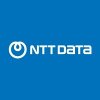Security Analyst
100+ Security Analyst Interview Questions and Answers

Asked in Qualys

Q. What's false positives and what is false negatives
False positives are incorrect alerts that are mistakenly identified as threats, while false negatives are actual threats that are missed by the system.
False positives are alerts that are incorrectly identified as threats by a security system.
False negatives are actual threats that are missed by the security system.
False positives can lead to wasted time and resources investigating non-existent threats.
False negatives can result in real threats going undetected and causing har...read more

Asked in SISA Information Security

Q. Can you give examples of false positives you've identified in SIEM?
False positives in SIEM
Misconfigured rules triggering alerts
Legitimate traffic being flagged as malicious
Inaccurate threat intelligence data
Inadequate correlation rules
Outdated signatures or patterns

Asked in TCS

Q. What is SQL Injection and how can we prevent it?
SQL Injection is a type of cyber attack where malicious SQL code is inserted into input fields to manipulate database queries.
SQL Injection occurs when attackers input malicious SQL code into input fields, tricking the application into executing unintended SQL commands.
To prevent SQL Injection, use parameterized queries or prepared statements to sanitize user input.
Input validation and limiting database permissions can also help prevent SQL Injection attacks.
Example: SELECT *...read more

Asked in Paramount

Q. What are the common port numbers used by Splunk?
Splunk commonly uses port numbers 8089, 9997, and 514 for various functions.
Port 8089 is used for Splunk Web and the REST API
Port 9997 is used for receiving data from forwarders
Port 514 is used for receiving syslog data

Asked in DXC Technology

Q. What is the first thing you would do if a machine is infected?
The first step would be to isolate the infected machine from the network to prevent further spread of the infection.
Isolate the infected machine from the network to prevent further spread of the infection
Identify the type of malware or virus that has infected the machine
Run a full system scan using antivirus software to detect and remove the malware
Update the operating system and all software to patch any vulnerabilities that may have been exploited
Restore the machine from a ...read more

Asked in Rainfotech

Q. Explain the OWASP top 10 2021.
OWASP top 10 2021 is a list of the most critical security risks to web applications.
Injection
Broken Authentication and Session Management
Cross-Site Scripting (XSS)
Security Misconfiguration
Insecure Cryptographic Storage
Insufficient Logging and Monitoring
Insecure Communication
Server-Side Request Forgery (SSRF)
Broken Access Control
Using Components with Known Vulnerabilities
Security Analyst Jobs




Asked in TCS

Q. mitre attack definition and how will u use
MITRE ATT&CK is a framework for understanding attacker behavior and tactics.
MITRE ATT&CK provides a comprehensive list of tactics, techniques, and procedures (TTPs) used by attackers.
It helps security analysts understand and categorize threats based on real-world observations.
Security analysts can use MITRE ATT&CK to map out potential attack scenarios and improve defense strategies.

Asked in TCS

Q. Incident management on Ddos attack
Incident management on DDoS attack involves identifying the attack, mitigating its impact, and preventing future attacks.
Quickly identify the type and source of the attack
Notify relevant stakeholders and activate incident response plan
Mitigate the attack by filtering traffic and blocking malicious IPs
Monitor network traffic and adjust mitigation strategies as needed
Conduct a post-incident analysis to identify areas for improvement
Implement preventative measures such as firewa...read more
Share interview questions and help millions of jobseekers 🌟


Asked in UST

Q. Top 10 owasp How to prioritise and remediate vulnerabilities
Prioritizing and remediating vulnerabilities using OWASP Top 10
Start by identifying the vulnerabilities that pose the highest risk to the organization
Use the OWASP Top 10 as a guide to prioritize vulnerabilities
Consider the likelihood and potential impact of each vulnerability
Remediate vulnerabilities based on their priority level
Perform regular vulnerability assessments to stay up-to-date on new vulnerabilities
Examples of high-priority vulnerabilities include SQL injection, ...read more

Asked in Virgin Media

Q. What is false Positive and false negative
False positive and false negative are errors in security analysis where a legitimate activity is incorrectly flagged as malicious, or a malicious activity is incorrectly classified as legitimate.
False Positive: When a security system incorrectly identifies a legitimate activity as malicious. For example, a firewall blocking a harmless website due to a false alarm.
False Negative: When a security system fails to detect a malicious activity and classifies it as legitimate. For e...read more

Asked in Rainfotech

Q. What is SQL encryption used for?
SQL encryption is used to protect sensitive data stored in a database by converting it into unreadable form.
SQL encryption is used to prevent unauthorized access to sensitive data.
It converts the data into unreadable form using encryption algorithms.
Encrypted data can only be decrypted with the correct encryption key.
SQL encryption can be used to protect data at rest and data in transit.
Examples of SQL encryption techniques include Transparent Data Encryption (TDE) and column...read more

Asked in TCS

Q. What is wapt how to perform do a audit
WAPT stands for Web Application Penetration Testing. It is a process of auditing and assessing the security of web applications.
WAPT is performed to identify vulnerabilities and weaknesses in web applications.
It involves simulating real-world attacks to test the security measures in place.
Common techniques used in WAPT include vulnerability scanning, penetration testing, and code review.
The goal is to uncover potential security flaws and provide recommendations for improvemen...read more

Asked in Tech Mahindra

Q. How do you handle compliance during audits?
I handle compliance in audits by ensuring all security measures are in place and regularly reviewed.
Regularly review and update security policies and procedures to ensure compliance with regulations
Conduct internal audits to identify any gaps in compliance and address them promptly
Collaborate with external auditors to provide necessary documentation and evidence of compliance
Implement security controls and measures to mitigate risks and ensure compliance
Stay informed about ch...read more

Asked in TAC Security

Q. What is xss? And how can it be fixed?
XSS stands for Cross-Site Scripting. It is a type of security vulnerability that allows attackers to inject malicious scripts into web pages viewed by other users.
XSS attacks can be prevented by properly validating and sanitizing user input.
Developers should also use output encoding to prevent malicious scripts from being executed.
Using Content Security Policy (CSP) can also help prevent XSS attacks.
Examples of XSS attacks include stealing user session cookies, redirecting us...read more

Asked in Devoir Software Solutions

Q. What do you know about TMZ zones?
Time zones used in aviation to prevent collisions between aircraft
TMZ stands for Terminal Manoeuvring Zone
TMZs are designated areas around airports where air traffic control has authority over aircraft movements
TMZs are used to prevent collisions between aircraft during takeoff and landing
Pilots must obtain clearance from air traffic control before entering a TMZ

Asked in TAC Security

Q. What is csrf? And how can it be fixed
CSRF stands for Cross-Site Request Forgery. It is a type of attack that tricks a user into performing an action they did not intend to.
CSRF occurs when a malicious website or email tricks a user into clicking a link or button that performs an action on a different website where the user is already authenticated.
To prevent CSRF attacks, websites can use techniques such as CSRF tokens, which are unique values generated for each user session and included in each form submission....read more

Asked in Mobikwik

Q. What is the difference between SSRF and CSRF?
SSRF is an attack that allows an attacker to send a crafted request from a vulnerable web application. CSRF is an attack that tricks a victim into performing an action on a website without their knowledge or consent.
SSRF stands for Server-Side Request Forgery while CSRF stands for Cross-Site Request Forgery.
SSRF allows an attacker to send a request from a vulnerable server to a third-party server while CSRF tricks a victim into performing an action on a website.
SSRF can be us...read more

Asked in Paramount

Q. Explain the importance of Vulnerability Assessment.
Vulnerability assessment is crucial for identifying weaknesses in a system and preventing potential security breaches.
Vulnerability assessment helps in identifying security loopholes and weaknesses in a system
It helps in prioritizing security measures and allocating resources effectively
Regular vulnerability assessments can prevent potential security breaches and data loss
Examples of vulnerability assessment tools include Nessus, OpenVAS, and Qualys
Vulnerability assessment is...read more
Asked in Xrg Consulting

Q. What is an API? Briefly explain.
API stands for Application Programming Interface. It is a set of protocols, routines, and tools for building software applications.
API allows different software applications to communicate with each other
It defines how software components should interact
APIs can be used to access data or functionality from a third-party service
Examples of APIs include Google Maps API, Twitter API, and Facebook API

Asked in Inspira Enterprise India Limited

Q. 1) What is firewall work ? 2) Describe OSI layer?
Firewall works as a barrier between internal and external networks. OSI layer is a model for network communication.
Firewall filters incoming and outgoing traffic based on predefined rules.
OSI layer has 7 layers: Physical, Data Link, Network, Transport, Session, Presentation, and Application.
Each layer has its own set of protocols and functions.
Firewalls operate at the network and transport layers of the OSI model.
Firewalls can be hardware or software-based.
OSI layer helps in ...read more

Asked in DoLittle Technologies

Q. Is XSS a client-side or server-side attack?
XSS is a client side attack.
XSS stands for Cross-Site Scripting
It involves injecting malicious scripts into web pages viewed by other users
The scripts are executed on the client side, making it a client side attack

Asked in Wipro

Q. What is the OSI model and can you describe its layers?
The OSI model is a conceptual framework that standardizes the functions of a telecommunication or computing system into seven different layers.
Layer 1 - Physical layer: Deals with physical connections and transmission of raw data.
Layer 2 - Data link layer: Responsible for node-to-node communication and error detection.
Layer 3 - Network layer: Manages routing and forwarding of data packets.
Layer 4 - Transport layer: Ensures end-to-end communication and error recovery.
Layer 5 -...read more

Asked in Nokia

Q. What are HLR and VLR in the context of telecommunications?
HLR and VLR are databases in mobile networks that store subscriber information and manage call routing.
HLR (Home Location Register) stores permanent subscriber data like phone numbers and service details.
VLR (Visitor Location Register) temporarily stores information about subscribers currently in the area served by a particular MSC.
When a mobile device connects to the network, the VLR queries the HLR to retrieve the necessary subscriber information.
Example: If a user travels ...read more

Asked in ACL Digital

Q. Recent Threat Detected And Mitigation Process
A recent threat detected was a phishing attack targeting employees. The mitigation process involved employee training and implementing email filtering systems.
Identify the type of threat (phishing attack)
Assess the impact on the organization
Implement mitigation measures such as employee training and email filtering systems
Monitor for any further threats or vulnerabilities

Asked in Netrika Consulting

Q. What is your methodological approach for API and web penetration testing?
The methodology approach for API and web pen test involves identifying vulnerabilities, testing for exploits, and reporting findings.
Identify the scope of the test and the target systems
Perform reconnaissance to gather information about the target
Test for common vulnerabilities such as SQL injection and cross-site scripting
Test for exploits to determine the impact of vulnerabilities
Report findings and provide recommendations for remediation

Asked in NTT Data

Q. What are Azure Security Policies?
Azure Security Policies are a set of rules and configurations that help enforce security controls within Azure environments.
Azure Security Policies help ensure compliance with security standards and best practices
They can be used to enforce specific security configurations, such as requiring encryption for storage accounts
Policies can be assigned at the subscription, resource group, or resource level

Asked in FIS

Q. What is your favorite go-to tool for security investigation?
My favorite go-to tool for security investigation is Wireshark.
Wireshark is a powerful network protocol analyzer used for troubleshooting, analysis, development, and education.
It allows me to capture and interactively browse the traffic running on a computer network.
I can use Wireshark to analyze network traffic, identify security vulnerabilities, and troubleshoot network issues.
Wireshark supports hundreds of protocols and has features for deep inspection of hundreds of proto...read more

Asked in TCS

Q. What are the different types of injection attacks?
Types of Injection include SQL injection, XSS injection, and command injection.
SQL injection: attackers insert malicious SQL code into input fields to manipulate the database
XSS injection: attackers insert malicious scripts into web pages viewed by other users
Command injection: attackers execute arbitrary commands on a server by manipulating input fields

Asked in YASH Technologies

Q. What is a Service Level Agreement?
Service Level Agreement is a contract between a service provider and a customer that outlines the level of service expected.
Defines the services to be provided
Specifies the responsibilities of both parties
Outlines the metrics used to measure performance
Includes penalties for not meeting agreed-upon service levels
Can cover aspects like uptime, response time, and resolution time
Example: An SLA between a cloud service provider and a business may guarantee 99.9% uptime

Asked in Mantle Solutions

Q. explain NMAP, also describe some switches in NMAP
NMAP is a network scanning tool used for discovering hosts and services on a computer network.
NMAP stands for Network Mapper.
It is used to scan networks to find open ports, detect operating systems, and identify services running on remote hosts.
Some common switches in NMAP include -sS (stealth scan), -sV (version detection), and -A (aggressive scan).
Interview Questions of Similar Designations
Interview Experiences of Popular Companies





Top Interview Questions for Security Analyst Related Skills

Calculate your in-hand salary
Confused about how your in-hand salary is calculated? Enter your annual salary (CTC) and get your in-hand salary


Reviews
Interviews
Salaries
Users










